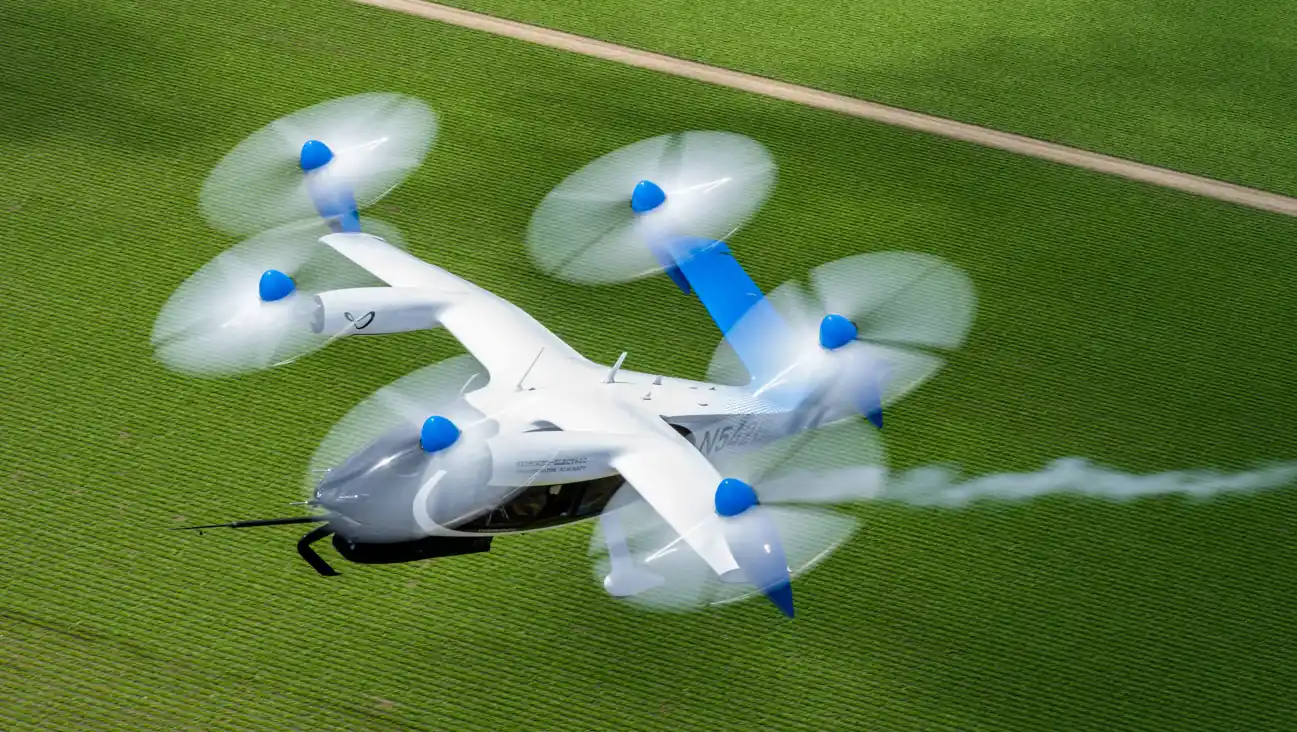Hydrogen technology is being promoted as an eco-friendly alternative to traditional gas-powered jets for mid-range travel.
Building on its successful battery-electric air taxi program, the aircraft can take off and land vertically. This demonstrates hydrogen’s potential for emissions-free, regional travel without a runway.
In September 2023, Joby’s H2FLY team set a world record by conducting the first piloted flight of a traditional liquid hydrogen-electric aircraft using their fuel cell technology.

Hydrogen-Powered Electric Propulsion
As part of the company’s new technology program, Joby and its H2FLY subsidiary in Stuttgart, Germany, developed a hydrogen-electric demonstrator.
Before conversion, the aircraft completed over 25,000 miles of battery-electric testing at Joby’s facility in Marina, California.
Based on Joby’s main battery-electric aircraft, this demonstrator has a liquid hydrogen fuel tank and fewer batteries, retaining the same airframe and design. H2FLY designed and built a fuel cell system that uses hydrogen to produce heat, water, and power.

The modification included adding a cryogenic fuel tank that stores up to 88 lbs (40 kg) of liquid hydrogen at 22 Kelvin (-420°F, -251°C). The tank’s vacuum jacketing keeps the surface temperature safe.
Hydrogen from the tank powers the H2F-175 fuel cell system, developed by H2FLY, which generates electricity through an electrochemical reaction with oxygen from the air, producing water and heat as by-products.
The electricity generated by the fuel cell powers the aircraft’s six rotors during flight. A small battery assists mainly during takeoff and landing, and the fuel cell system also recharges this battery.
The Future of Eco-Friendly Aviation
Net zero targets require aviation and other sectors to adopt low-carbon solutions. Companies like Joby Aviation are leading the way with battery-electric and hydrogen fuel cell air taxis, aiming to make urban mobility more practical and sustainable.

Most of the design, testing, and certification work Joby Aviation has done on its battery-electric aircraft also applies to hydrogen-electric flights.
The company plans to use the same landing pads, operations team, and ElevateOS software for battery- and hydrogen-electric aircraft.
Joby claims their recent flight is the first forward flight of a liquid hydrogen-fueled VTOL, setting a new record. They believe liquid hydrogen can greatly extend aircraft capabilities, expecting ranges of over 900 miles (1,500 km) for models like the H2Fly HY4 fixed-wing aircraft.
